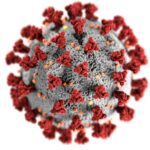Scientists Rejuvenate Skin Of 53-Year-Old Woman To That Of 23-Year-Old In Groundbreaking Experiment

What if the key to unlocking youth didn’t lie in a magic potion or an expensive cream, but in the very science that drives the cells of our bodies? For centuries, humanity has chased the elusive dream of eternal youth, with countless remedies promising to turn back the clock. But now, science is offering something far more extraordinary—something that could redefine our understanding of aging.
Imagine a 53-year-old woman with skin that glows with the vitality and smoothness of a 23-year-old. No, this isn’t the latest skincare trend or cosmetic surgery—it’s a groundbreaking experiment that has just brought us a step closer to reversing the effects of time itself. In a world where anti-aging treatments are a multibillion-dollar industry, this recent development raises a profound question: Can we truly rewire our biological clock, not just to look younger, but to feel younger, too?

The Science Behind the Miracle: Rewinding Without Erasing
At the heart of this breakthrough lies a simple yet profound idea: aging is not just a passage of time—it’s a pattern written in the language of the body.
Every cell in the human body carries markers of age. These markers—found in DNA, gene expression, and chemical modifications called epigenetic tags—act like timestamps, telling a cell how old it is and how it should function. As time passes, these instructions become worn, distorted, or silenced, leading to the physical and functional changes associated with aging. But what if those instructions could be refreshed?
The foundation for this possibility began in 2006, when Nobel Prize-winning scientist Shinya Yamanaka discovered a way to reprogram adult cells into pluripotent stem cells—cells capable of becoming almost any tissue in the body. By introducing four key molecules, known today as the Yamanaka factors, he could effectively erase a cell’s identity, returning it to an embryonic-like state. This method, known as induced pluripotent stem cell (iPSC) technology, was a revolution. But it came with a challenge: in becoming young again, cells also lost who they were.
The question remained—could youth be restored without wiping the slate clean?

The team at the Babraham Institute, led by molecular biologist Prof. Wolf Reik and researcher Dr. Diljeet Gill, found an answer. Instead of taking cells all the way back to their embryonic beginnings, they paused the reprogramming process partway through—during what’s called the maturation phase. This method, known as Maturation Phase Transient Reprogramming (MPTR), allowed the cells to regain youthful characteristics without losing their original identity as skin cells.
The results were astonishing. Skin cells taken from a 53-year-old woman were treated using this shortened process. When analyzed, these cells no longer resembled their original age. On multiple levels—from genetic expression to epigenetic signatures—they behaved like they belonged to a 23-year-old.
This wasn’t merely a surface change. The rejuvenated cells produced more collagen, a protein vital for skin strength and elasticity. They also moved faster, a sign of improved healing ability. Even the markers used to estimate biological age—so-called “epigenetic clocks”—confirmed a reversal of up to 30 years.
Perhaps most importantly, the cells retained their identity. They were not stem cells; they were rejuvenated fibroblasts—the same type of cell they had been before, only now biologically younger.
In essence, scientists had discovered how to rewind the clock, not to the beginning, but just far enough to restore function—without erasing memory.
What This Means for You: Beyond Vanity, Toward Vitality

The implications of this discovery stretch far beyond the surface of the skin.
While it is tempting to see this as a leap forward for cosmetic science—and in many ways, it is—its true potential lies much deeper. Rejuvenating skin cells is not about erasing wrinkles for vanity’s sake. It’s about restoring the very foundation of health and healing. It’s about revitalizing the systems that break down as we age.
One of the most striking outcomes of the Babraham Institute’s research was the increase in collagen production. Collagen is more than a beauty buzzword; it’s essential for maintaining skin integrity, joint health, and the strength of connective tissues. As the body ages, collagen levels drop, leading to fragile skin, aching joints, and slower recovery from injury. The ability to reawaken this process could mean stronger, more resilient tissue across the body.
In lab tests, the rejuvenated skin cells not only looked younger—they behaved like it. They moved faster in simulated wound environments, suggesting real promise for accelerating healing in older individuals or those recovering from injury.
But the impact doesn’t stop there.
Age-related diseases such as Alzheimer’s, diabetes, and cardiovascular issues are deeply tied to cellular aging. Preliminary signs from animal studies hint that similar reprogramming techniques could rejuvenate internal organs like the pancreas. Early evidence also showed that genes associated with neurological and vision-related conditions—such as APBA2 and MAF—were reset to a more youthful state using this method.
If such rejuvenation could be safely replicated in other types of cells, it could mark a turning point in how aging-related diseases are treated. Conditions that once required managing symptoms might one day be addressed at the cellular source.

Even the immune system, which becomes less responsive with age, could benefit. Health experts like Prof. Melanie Welham of the Biotechnology and Biological Sciences Research Council have pointed out that revitalizing immune cells might strengthen responses to infections and vaccinations in the elderly—something that has long challenged public health.
In essence, this experiment does not simply ask how to look younger. It asks how to live longer—better.
Of course, translating this science from Petri dish to patient is not immediate. But the direction is clear: this research opens the door to a future where aging may no longer be something to endure, but something to gently reshape.
A Breakthrough Bound by Limits
As with any scientific breakthrough, this discovery walks a line between promise and precaution.
While the results of the Babraham Institute’s experiment are extraordinary, the researchers themselves have been careful to temper excitement with realism. The process used—based on induced pluripotent stem cell (iPSC) technology—relies on genetic manipulation. And with that comes a significant concern: the risk of cancer.
Fully reprogramming cells into stem cells involves turning on genes that can drive uncontrolled cell growth. This is why the team’s approach, which stops short of full reprogramming, is so noteworthy. Yet even this more measured technique, Maturation Phase Transient Reprogramming, has not been proven safe for human use. The lab-grown rejuvenated cells are promising, but they remain in a controlled environment, far from the complex systems of a living body.
Professor Wolf Reik, who led the study, acknowledges that the path from lab bench to clinic is a long one. “There are several scientific issues to overcome before it could move out of the lab,” he stated in interviews. The team is now exploring safer alternatives—ways to trigger similar rejuvenation without permanent genetic changes.
Skeptics within the scientific community urge caution. Professor Robin Lovell-Badge of the Crick Institute in London pointed out that while the concept is intriguing, it is far from simple. “It is ambitious to think you are going to find chemicals that are both effective and safe,” he said, adding that other types of tissues may respond very differently—or not at all.
He also noted that applying such a process to an entire human body, even if possible, would come with enormous challenges. Different cells age in different ways. Some may require unique conditions to reprogram safely. The complexity of orchestrating whole-body rejuvenation remains, in his words, “pure speculation.”
In other words, the dream is alive—but it is not without danger. The scientific method demands time, testing, and trust in evidence over excitement. These are early steps in a journey that could take years—if not decades—to fully unfold.
And yet, the fact remains: a line has been crossed. A new chapter has begun. For the first time, scientists have shown that human cells can be made younger in both appearance and behavior, without erasing their identity.
That alone changes the conversation.
Youth Isn’t Just in the Mirror

Science may one day offer tools to slow or even reverse the physical signs of aging. But the deeper question remains: what does it truly mean to be young?
This breakthrough, remarkable as it is, focuses on skin cells. It speaks to collagen, gene expression, and the pace of healing. These are powerful indicators of vitality—but they are only part of the picture.
Youth is not only biological. It is also mental, emotional, and spiritual. It lives in curiosity, in openness, in the willingness to begin again. It shows up in the courage to unlearn, to evolve, to imagine a future not defined by the past.
The Babraham Institute’s discovery gives language to what many already feel intuitively: that renewal is possible. That change is not just a metaphor—it is a mechanism written into the body itself. And that even when time has passed, something within us can still reset, still reawaken.
But the pursuit of youth—if it becomes purely external—can distract from the internal work that defines true well-being. Skin may be softened. Wrinkles may fade. But without healing the patterns of the mind, the body alone cannot bring peace.
This research, then, is more than a scientific milestone. It is a mirror—one that reflects not just the potential of our cells, but the choices we face each day.
To stay stagnant or to grow.
To cling to fear or to embrace change.
To see age as a loss—or as an invitation to awaken something deeper.
Long before this technology reaches hospitals or homes, there is already a kind of rejuvenation available. One that doesn’t require a microscope or molecules. One that begins with awareness, intention, and the courage to live fully—at any age.
Reprogram Your Life and Redefine Aging

While the scientific community continues to explore the boundaries of aging and renewal, this breakthrough serves as a timely reminder: transformation is not limited to laboratories. Change—meaningful, lasting, personal change—can begin long before any therapy becomes available to the public.
The principle behind this research is clear. Under the right conditions, aging cells can regain their function and youthfulness without losing their identity. That same principle can be applied to life itself. Growth does not require starting over. Reinvention does not mean erasing the past. With the right mindset and environment, individuals can rejuvenate aspects of their physical health, mental clarity, and emotional resilience—without becoming someone else.
There are no shortcuts to biological change, but there are daily choices that echo its message. Nourishing the body with movement, rest, and real food. Cultivating relationships that bring meaning and depth. Engaging the mind through learning, creativity, and curiosity. Letting go of beliefs that equate age with decline, and embracing the idea that vitality is not fixed—it is flexible.
This research may one day lead to new treatments for aging-related conditions. But even now, it offers something more immediate: a shift in perspective. Aging is no longer a one-way path. It is a process, and like any process, it can be influenced, redirected, and in some ways, renewed.
The clock may move forward. But how we live each hour remains a choice.
Featured Image Source: Shutterstock
Source:
- Diljeet Gill, Aled Parry, Fátima Santos, Hanneke Okkenhaug, Christopher D Todd, Irene Hernando-Herraez, Thomas M Stubbs, Inês Milagre, Wolf Reik (2022) Multi-omic rejuvenation of human cells by maturation phase transient reprogramming eLife 11:e71624
https://doi.org/
Loading...
Related Content
 When Science Shows Our Bones Can Rise Again
When Science Shows Our Bones Can Rise AgainBy Prince Ea





